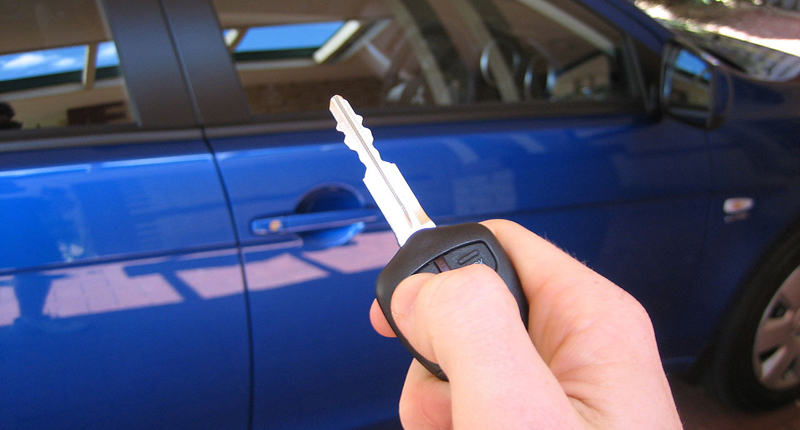Inbox icons, subject line sorcerers, CTA kings – the results are in. The 2025 You Mailed It Awards by Everlytic have crowned their champs, with Old Mutual Rewards and Machine_ taking…
8 optional extras you should avoid on your next new car

Some manufacturers pride themselves on the fact that their vehicles come with either absolutely no expensive options or an extras list shorter than Tom Cruise without his platforms (hint: this is very, very short).
These automakers offer virtually every feature — from a panoramic sunroof to radar-guided cruise control — as standard equipment. It’s a simple case of you either buy the car, or you don’t. And it often translates into superb value for money for the customer.
Other car-makers, however, adopt a completely different stance. These (mostly premium) brands provide only the bare basics, forcing you to trawl through pages of exorbitantly priced options and sometimes highly complicated personalisation packages in order to spec the car you actually want.
Now, while it’s certainly satisfying to be able to build a vehicle to one’s exact specifications, the accompanying costs are often nothing short of pornographic. In fact, tick all the optional boxes on certain vehicles, and it’s almost possible to double the sticker price. We kid you not.
So, with this in mind, we decided to round up a list of optional features that you should pretty much never consider specifying. If your chosen vehicle doesn’t come fitted with any of these as standard, it’s really not worth shelling out extra. Either that, or they’re just plain scams.
Some of these options are offered on high-end vehicles and others apply to everyday city runabouts. Either way, we think it’s pointless paying for any of the following…
1. Satellite navigation
If your preferred new car doesn’t come standard with integrated satellite navigation, should you really consider digging deeper into your pockets? We say no. Why? Well, if you really need a GPS, there are plenty of decent aftermarket alternatives out there. Sure, they probably won’t look as neat as in-dash systems, but they do the job just as well. Besides, if you own even an average smartphone, you’re likely covered on the navigation front anyway.
2. Ceramic brake pads
Unless you drive a high-performance, fire-breathing speed-machine and virtually live at your local track, you don’t need ceramic brakes. Sure, they have distinct advantages: they can withstand intense heat (and thus diminish brake-fade), they’re more resistant to warping, they don’t corrode, they generally last longer and they offer a decent weight saving. But they also cost a fair bit more than standard pads, and let’s be honest: when was the last time you overheated your brakes during everyday driving? We rest our case.
3. Nitrogen-filled tyres
Some dealers will attempt to charge you a fair chunk of change to fill your new car’s tyres with nitrogen before you drive it off the lot. Don’t take the bait. While there may be benefits to jilting air (which is made up of well over 70 percent nitrogen anyway) and embracing nitrogen — proponents cite improved handling, better fuel efficiency and longer tyre life — they are largely negligible. Then there are the convenience factors (you likely can’t simply pop down to your local petrol station to top up your tyres) to consider, as well as overall cost. If you really want nitrogen to fill your new ride’s rubber, have the job done at a tyre shop, it’ll be way cheaper than the dealer.
4. Extra under-body rust-proofing
Since your new car is probably rather a large purchase, you may be tempted to pay the dealer premium for extra rust-proofing. But consider that virtually all new cars have top quality rust protection applied on the assembly line in the factory, and most manufacturers include a perforation/corrosion warranty with the purchase. Even the materials used to build modern automobiles now mean they’re not nearly as susceptible to rot as they once were. Unless you live in an area with plenty of ice and thus lots of salt on the roads, even considering paying the dealer a huge mark-up for such a service is pure folly.
5. Paint protection
The paint protection dealer option is just as iffy as the extra rust-proofing mentioned above. If you want to provide protection for your brand new car’s paintwork (which these days is likely to be quite durable anyway), skip the eye-poppingly expensive “paint sealant†treatment and get into the routine of regular washing and waxing (your car, not yourself — unless that’s your thing). After all, the option the salesman is trying to flog you is probably nothing more than a polymer sealant you could quite easily apply yourself.
6. Colour stitching
The leather trim in some high-end vehicles often features colour stitching. This contrasting effect tends to be rather pleasing to the eye, lending the cabin a sporty edge. Truth be told, we’re big fans. Some of these manufacturers (we’re looking at you, Porsche, Ferrari and others) also allow you to specify exactly which colour stitching you prefer. Thing is, most of them will charge you a sizeable amount just to use a different colour thread — which is kind of ridiculous. Unless you’ve got more money than sense, resist the temptation and stick with the standard hue.
7. CD changer
First off, who still uses CDs in their new car? As long as the standard audio system includes an auxiliary input (or indeed Bluetooth streaming capability) that allows you to connect your smartphone (or even an MP3 player), you should have little use for a traditional multi-changer. The other option, of course, is to store your favourite beats on a flash-drive and simply slot in into the (hopefully standard) USB port. A small drive takes up far less space than an awkward collection of CD covers, after all…
8. Credit insurance
If you’re not lucky enough to be buying a brand new car cash (if you are, please tell us how), you’ll be financing at least part of the purchase price. And most dealerships will take this opportunity to attempt to scare you into buying life and disability insurance to cover your car loan. But bear in mind that these policies tend to be ridiculously expensive — considering the short period they cover — contain bucket-loads of nasty fine-print, and if included in your total loan amount, will bloat your monthly premium (and the total interest paid). If you feel you need the added security that comes with such cover, consider purchasing a cheaper, long-term life insurance policy from a separate outlet — if you haven’t got such a policy already.
Image: James086 via Wikimedia Commons.

